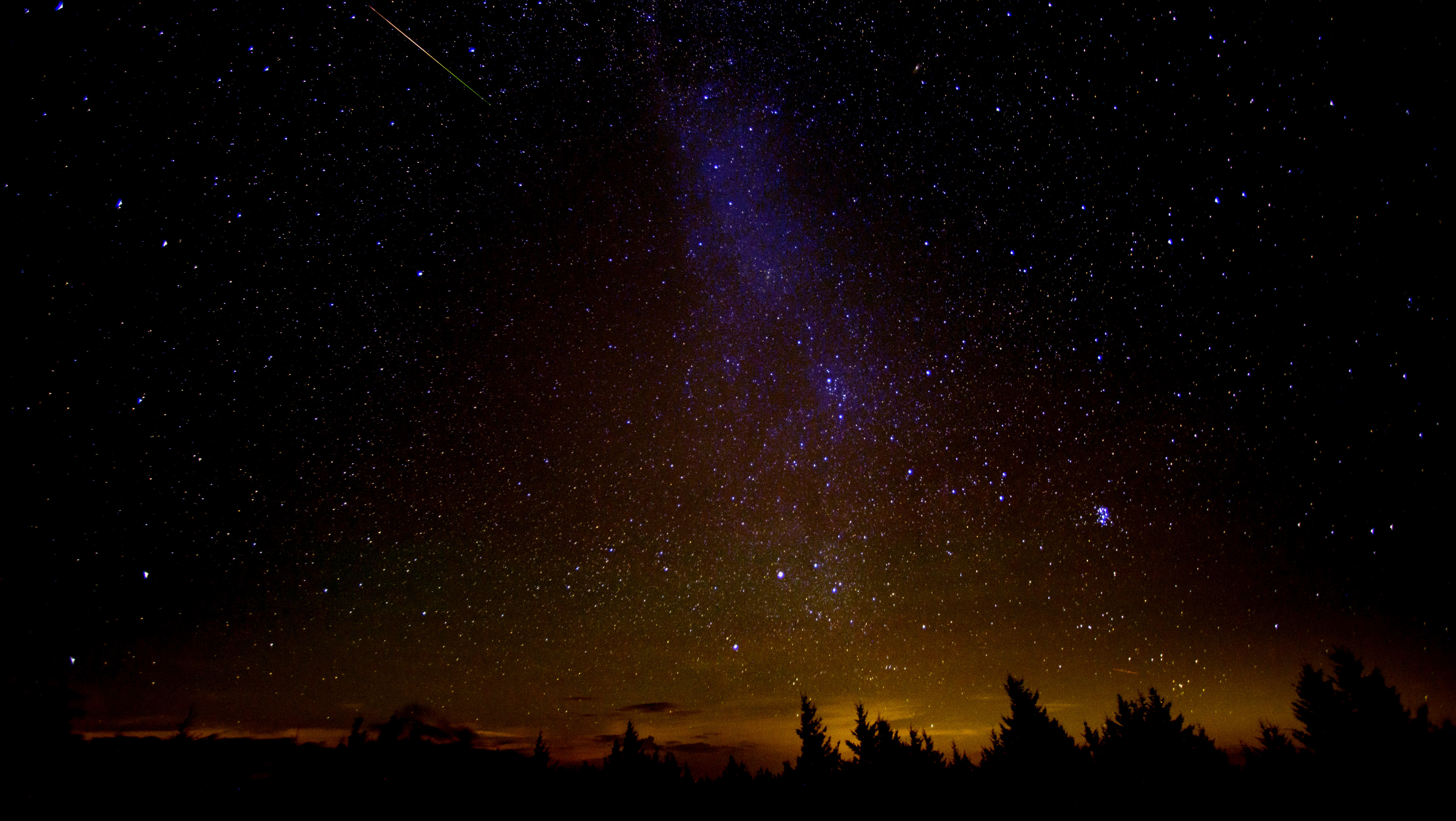How to see the Orionid Meteor Shower
Look up and you could be in for a 'celestial fireworks display' as a host of shooting stars whizz over Earth

Britain's night skies will be lit up by the Orionid Meteor Shower this week as the Earth passes through a stream of debris from Halley's Comet.
Experts predict up to 25 shooting stars will be on display every hour, providing a potentially thrilling spectacle for stargazers.
"The spectacular celestial fireworks displays are created when pieces of the comet disintegrate in Earth's upper atmosphere, nearly 60 miles up," says the Daily Telegraph.
The Week
Escape your echo chamber. Get the facts behind the news, plus analysis from multiple perspectives.

Sign up for The Week's Free Newsletters
From our morning news briefing to a weekly Good News Newsletter, get the best of The Week delivered directly to your inbox.
From our morning news briefing to a weekly Good News Newsletter, get the best of The Week delivered directly to your inbox.
When is the best time to see it?
The Orionids have been visible since 2 October and should last until 7 November, with today being the optimum time to see them.
If skies are dark and clear, you could see up to 25 shooting stars an hour, each travelling at around 41 miles per second. However, this year the light of the moon may weaken visibility.
The Orionid shower is one of the most reliable annual displays of "shooting stars", says Space.com, but the glare of the waning gibbous moon is a "formidable handicap".
A free daily email with the biggest news stories of the day – and the best features from TheWeek.com
A spokesman for the Met Office said: "Orionid meteors are known to be very fast... and typically on the faint side, although with clear, dark skies you still have a good chance of spotting one with its persistent, long trail."
Where is the best place to see it from?
Find a comfortable spot away from bright lights and give your eyes at least 45 minutes to get used to the dark. Comfort and warmth are important because you may need to wait for some time.
To increase your chances of seeing the Orionid shower clearly, have your back to the moon or make sure it's obscured behind a building or tree.
You should be able to spot the shower with the naked eye, but keep your fingers crossed for clear skies and be patient - the Telegraph says anyone hoping for a glimpse will need to be "prepared to wait... And wait... And wait."
-
 Political cartoons for December 7
Political cartoons for December 7Cartoons Sunday’s political cartoons include the Trump-tanic, AI Santa, and the search for a moderate Republican
-
 Trump’s poll collapse: can he stop the slide?
Trump’s poll collapse: can he stop the slide?Talking Point President who promised to ease cost-of-living has found that US economic woes can’t be solved ‘via executive fiat’
-
 Sudoku hard: December 7, 2025
Sudoku hard: December 7, 2025The daily hard sudoku puzzle from The Week
-
 Femicide: Italy’s newest crime
Femicide: Italy’s newest crimeThe Explainer Landmark law to criminalise murder of a woman as an ‘act of hatred’ or ‘subjugation’ but critics say Italy is still deeply patriarchal
-
 Brazil’s Bolsonaro behind bars after appeals run out
Brazil’s Bolsonaro behind bars after appeals run outSpeed Read He will serve 27 years in prison
-
 Americans traveling abroad face renewed criticism in the Trump era
Americans traveling abroad face renewed criticism in the Trump eraThe Explainer Some of Trump’s behavior has Americans being questioned
-
 Nigeria confused by Trump invasion threat
Nigeria confused by Trump invasion threatSpeed Read Trump has claimed the country is persecuting Christians
-
 Sanae Takaichi: Japan’s Iron Lady set to be the country’s first woman prime minister
Sanae Takaichi: Japan’s Iron Lady set to be the country’s first woman prime ministerIn the Spotlight Takaichi is a member of Japan’s conservative, nationalist Liberal Democratic Party
-
 Russia is ‘helping China’ prepare for an invasion of Taiwan
Russia is ‘helping China’ prepare for an invasion of TaiwanIn the Spotlight Russia is reportedly allowing China access to military training
-
 Interpol arrests hundreds in Africa-wide sextortion crackdown
Interpol arrests hundreds in Africa-wide sextortion crackdownIN THE SPOTLIGHT A series of stings disrupts major cybercrime operations as law enforcement estimates millions in losses from schemes designed to prey on lonely users
-
 China is silently expanding its influence in American cities
China is silently expanding its influence in American citiesUnder the Radar New York City and San Francisco, among others, have reportedly been targeted